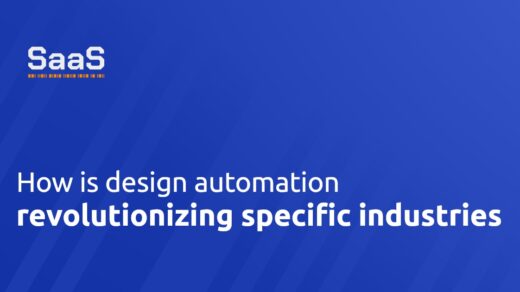Understanding the Role of Feedback Loops in Design Automation
In the prevailing landscape of modern design automation, the concept of feedback loops holds undeniable significance. A fundamental point to note is that feedback loops in design automation are strategies that help in tracking the outputs of a system for subsequent use as inputs. The information from outputs retroactively affects the operation of the same system, thus creating a continual cycle of information flow.
This notion is integrated into the undercurrents of design automation in a way that the process repeats itself with consistent modifications based on prior results. The feedback loop hence aims to instigate adjustments and refinements, converging towards a highly precise and error-free outcome.
How Can Feedback Loops Improve Design Automation Processes?
The integration of feedback loops within design automation can step up the system's performance several notches. They assist in tuning the algorithms or system based on real-time data, thereby optimizing the process continuously. The feedback loop not only helps identify glitches in the early stages but also acts as a rectifying system.
These mechanisms actively learn precise needs and specifications while simultaneously refining the process. Feedback loops ensure a progressive improvement in the design quality, fostering an iterative approach to developments. Moreover, their integration within design automation systems can lead to heightened customization capabilities.
Overcoming Challenges: Harnessing the Power of Feedback Loops
While the employment of feedback loops can vitally reform design automation, it comes with its share of complexities. The regular updating of algorithms based on feedback necessitates a well-structured mechanism to collect and integrate these invaluable insights. Furthermore, the implementation of these feedback loops requires a comprehensive understanding of the underlying design processes.
The solution relies on formulating a robust system, which satisfactorily gathers customer insights and design metrics. Furthermore, design automation processes need to be adaptable to integrate changes resulting from feedback. Tremendous potential lies in harnessing these feedback loops correctly, translated into efficient and superior design outcomes.
Enhancing Design Automation Efficiency through Feedback Loops
Feedback loops indisputably play a major part in escalating the efficiency of design automation. They encompass the capability to self-correct and adapt, thereby accelerating the design process and designing quality. This learning mechanism helps in fine-tuning the design specifications based on feedback, leading to increasingly accurate results.
These automated corrective mechanisms impact positively on the speed, precision, and repeatability of the design process, an aspect that is crucial in today's fast-paced digital era. By embracing feedback loops in design automation, enterprises can witness substantial improvements in their design process, exhibiting a far superior and automated design environment.
Despite the challenges that come along, an effective integration of feedback loops within the design automation process proves highly beneficial. They serve as an instrument to yield better quality designs, augment productivity, and above all, achieve substantial efficiency in the process. Understanding and leveraging these feedback loops effectively is imperative to fully realize the potential of automation in design.








